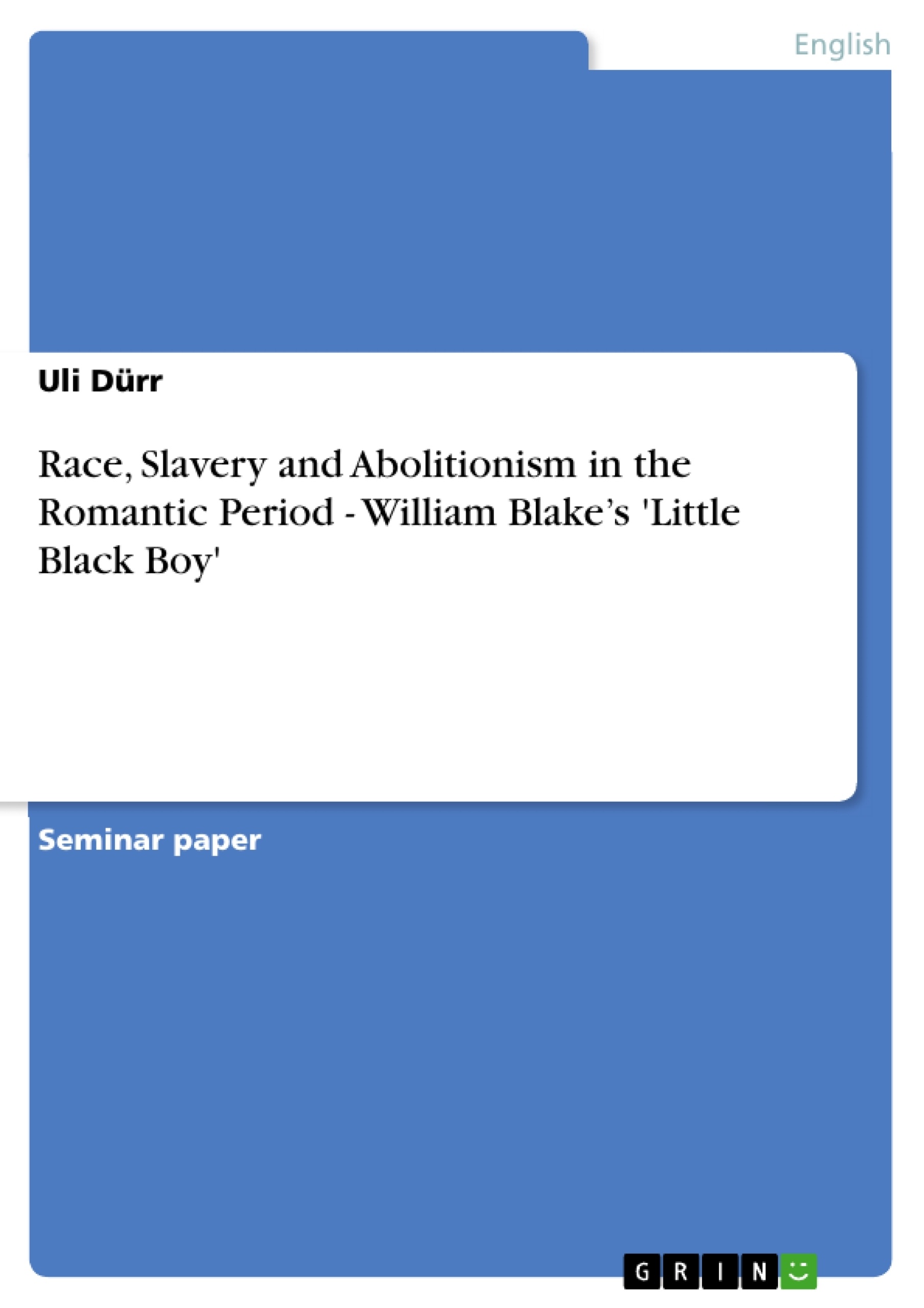This term paper deals with the institution of slavery and the process of its abolition and takes a look at the different reactions in Romantic literature.
First of all, an overview over the historical background will be given, showing the economic importance of the slave trade at the end of the 18th century, as well as giving an outline of the con-temporary major race theories, that were underlying its justification. The movement for the abolition of slavery will be introduced, as well as some of their representa-tives, like Thomas Clarkson, or William Cowper. Subsequently, the main part of the paper will deal with William Blake and his poem "Little Black Boy". The piece will be taken as an example for 18th century abolitionist literature and will be analysed, with the help of secondary literature by Hazard Adams, D.G. Gillham, David Erdman and Lauren Henry. A special focus will be on the poem’s religious theme. The term paper will end with a conclusion, summarizing the interpretations of the before-mentioned literary scientists and evaluating the significance of the paper’s findings.
Inhaltsverzeichnis (Table of Contents)
- Introduction
- Historical Background
- William Blake: The Little Black Boy
Zielsetzung und Themenschwerpunkte (Objectives and Key Themes)
This paper examines the representation of slavery and abolitionism in Romantic literature, focusing on William Blake's "The Little Black Boy." It aims to analyze the poem within its historical context, considering the economic importance of the slave trade, prevailing racial theories, and the rise of the abolitionist movement.
- The historical context of slavery and the slave trade in 18th-century Britain.
- The prevalent racial theories and their influence on the justification of slavery.
- The development and impact of the abolitionist movement.
- An analysis of William Blake's "The Little Black Boy" as an example of abolitionist literature.
- The religious themes within Blake's poem.
Zusammenfassung der Kapitel (Chapter Summaries)
Introduction: This chapter sets the stage by highlighting the historical context of racism and its connection to colonialism. It introduces the Romantic period and its significance within the context of the British Empire's expansion, emphasizing the importance of the abolitionist movement. The chapter outlines the paper's structure, focusing on the historical background of slavery, racial theories, the abolitionist movement, and a detailed analysis of Blake's "The Little Black Boy."
Historical Background: This section provides an overview of slavery in 18th-century England, including the continued slave trade despite the legal abolition of slavery in 1772. It discusses the economic motivations behind the slave trade, the immense influence of British merchants and West Indian planters, and the rise of abolitionist voices. The chapter also explores contrasting racial theories prevalent at the time: the "two-species" theory and the more widely held belief in a single human family with a hierarchy of races.
Schlüsselwörter (Keywords)
Romanticism, slavery, abolitionism, William Blake, "The Little Black Boy," racial theories, British Empire, colonialism, religious themes, 18th-century literature.
- Quote paper
- Uli Dürr (Author), 2011, Race, Slavery and Abolitionism in the Romantic Period - William Blake’s 'Little Black Boy', Munich, GRIN Verlag, https://www.grin.com/document/186930



